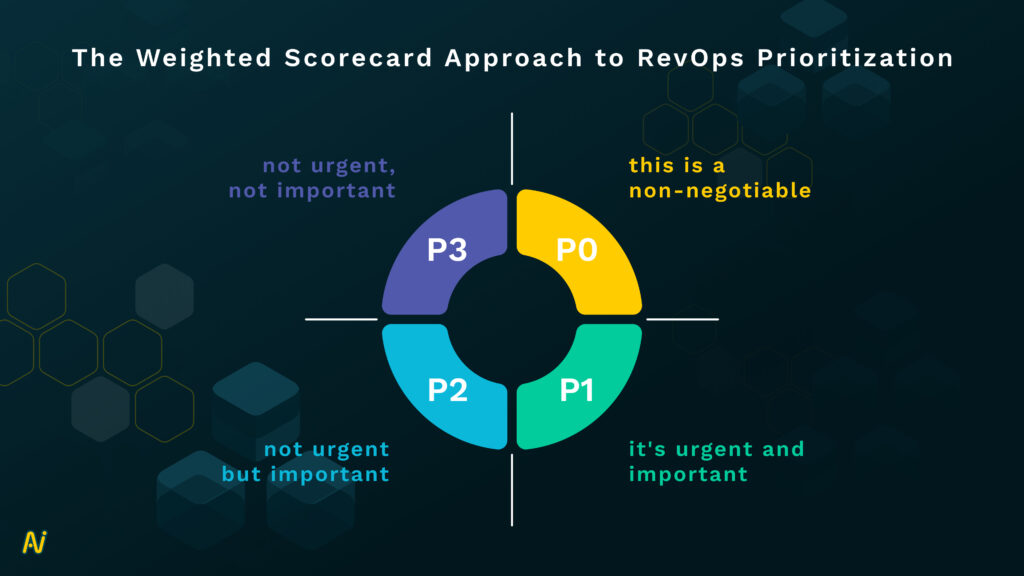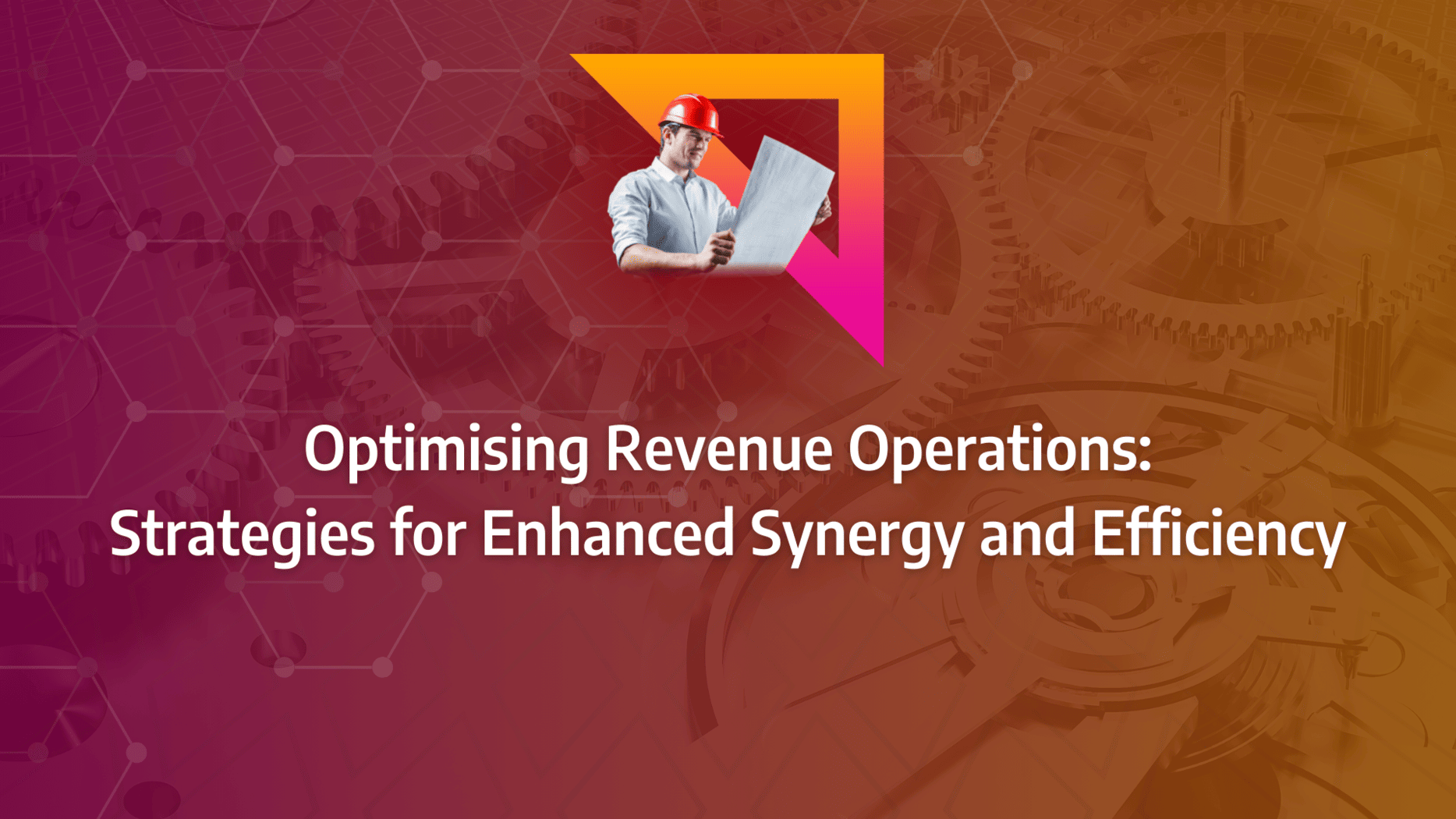Are your sales, marketing, and customer success teams working towards a common revenue goal, or do silos and misaligned objectives hinder your progress? The ability to unify these departments under a single revenue operations (RevOps) strategy is crucial.
Effective RevOps doesn’t just streamline processes; it transforms them, enabling teams to work more efficiently and with greater synergy. By integrating technology, leveraging data-driven insights, and fostering clear communication, businesses can achieve a level of operational efficiency that directly impacts their bottom line. Dive into this guide to discover advanced strategies that will not only align your teams but also enhance your revenue operations for sustained growth.
- Unify Sales, Marketing, and Customer Success: Implement a RevOps framework that aligns all departments under a common revenue goal, ensuring seamless collaboration and improved efficiency.
- Leverage Technology for Synergy: Adopt CRM systems and automation tools to streamline communication and processes across departments, reducing silos and enhancing operational efficiency.
- Data-Driven Decision-Making: Regularly audit and analyse data to make informed decisions that drive revenue growth and operational improvements.
- Foster Clear Communication: Establish clear communication channels between teams to ensure that everyone is aligned with the company’s revenue objectives.
- Continuous Process Optimisation: Regularly review and refine your RevOps strategy to adapt to changing market conditions and maintain operational efficiency.
- Cultural Alignment: Ensure that your company’s culture supports the goals of RevOps by fostering collaboration and shared accountability among teams.
What is Revenue Operations?
As a business scales, managing and streamlining processes to ensure all teams work towards unified goals becomes increasingly challenging. In today’s service-oriented economy, the customer journey extends beyond mere transactions. It encompasses onboarding new clients, managing and upgrading accounts, and maintaining engagement throughout their entire relationship with your business.
Historically, sales and marketing teams operated in isolation, each pursuing distinct objectives with minimal interdepartmental collaboration. The notion of customer success was virtually non-existent. However, in the current customer-centric era, businesses must adopt a comprehensive approach to the entire customer lifecycle.
Without a cohesive revenue operations strategy, operational silos are inevitable. Disjointed sales, marketing, and customer success teams hinder revenue generation, leading to miscommunications, inconsistencies, and redundant efforts.
Consider these suboptimal scenarios: the sales team may miss lucrative opportunities due to delays in receiving relevant leads from the marketing team, which might be focusing on ineffective campaigns. Conversely, the sales team might sell products and services without adequate support from the customer success team, resulting in customer dissatisfaction and increased churn, thereby disappointing the finance team with less profitable outcomes.
What are the key roles within a revenue operations team?
A well-structured revenue operations team is pivotal for seamless integration and optimisation of processes. Here are the essential roles within such a team:
- Revenue Operations Manager: Oversees the revenue operations strategy and planning, managing both strategic and tactical aspects.
- Sales Operations Analyst: Focuses on optimising sales processes and performance through detailed analysis and insights.
- Marketing Operations Manager: Ensures marketing efforts are aligned with the overall revenue strategy and operational efficiency.
- Customer Success Operations Analyst: Works to enhance customer experience and satisfaction, crucial for reducing churn and increasing lifetime value.
- Data Analyst: Collects and analyses data, translating it into actionable insights and comprehensive reports.
What Matters Most?
Aligning your sales, marketing, and customer success teams typically leads to more cohesive growth, ultimately enhancing revenue performance. Clients often discover that establishing a scalable revenue model is essential for sustaining long-term growth, allowing them to adapt effectively to market shifts. Furthermore, leveraging data-driven decision-making not only refines strategies but also aligns them with customer needs, resulting in improved overall outcomes.Get In Touch
How should a RevOps team be structured for larger SaaS vendors?
For a larger SaaS vendor, an optimal revenue operations team might be structured as follows:
- Revenue Operations: Responsible for the overarching RevOps strategy and planning, handling processes and activities crucial for alignment.
- Revenue Analytics: Comprises BI engineers, database administrators, and data analysts who collect and analyse data to provide actionable insights.
- Revenue Enablement: Manages onboarding and coaching for various teams to ensure effective use and updates of tools and strategies.
- Revenue Systems: Collaborates with IT to ensure all teams have timely access to necessary data and insights.
Essential Components of a RevOps Team
1. RevOps Lead
The RevOps Lead serves as the cornerstone of the revenue operations team. Their primary responsibility is to ensure the successful implementation of the revenue operations strategy and structure established by the organisation. Typically, the RevOps Lead reports to the Director of Revenue Operations or the Chief Revenue Officer.
In organisations where the RevOps team is composed of leaders from various departments, the RevOps Lead must synchronise the efforts of multiple teams. In contrast, in companies with a dedicated RevOps team, the Lead’s role involves planning and overseeing the execution of diverse revenue operations strategies.
2. Project Management Team
Implementing effective revenue operations strategies necessitates enhancing processes within the sales, marketing, and customer success teams. RevOps analysts evaluate each process to identify areas for improvement. The project management team then undertakes these changes as distinct projects, focusing on improving individual processes. While these projects might not pertain directly to daily operations, they significantly boost overall efficiency in the long term.
3. Analytics and Insights
The collection and analysis of the right metrics are vital for assessing the performance of various teams and their initiatives. Although most companies have mechanisms to gather performance data, it often remains siloed and unprioritised. The analytics team’s main role is to ensure the accurate collection and interpretation of data, uncovering insights and trends that enable data-driven decisions within revenue operations strategies.
4. Platform and Tools Team
Given the multitude of tasks and the vast amount of data involved, a revenue operations team generally utilises a diverse revenue operations tech stack that requires regular maintenance, updates, and renewals. This upkeep can consume valuable time for analysts and other team members. Therefore, many firms establish a platform team to manage these tasks efficiently, ensuring the tech stack functions optimally.
5. Operations Management
Operations management is a crucial element of any revenue operations team. This team collaborates with the marketing, sales, and customer success departments to review their operations, ensuring alignment with the company’s revenue strategy and operations. Their objective is to streamline processes and enhance overall operational efficiency to drive revenue growth.
6. Enablement
The enablement team’s role, while not fixed, encompasses various tasks that empower the marketing and sales teams to enhance their performance. This might include creating product tutorials, gathering customer reviews, and conducting regular training sessions for sales representatives. By facilitating these activities, the enablement team plays a crucial role in supporting the broader revenue operations responsibilities.
What are the four foundational components for successfully implementing revenue operations?
To position your organisation for success with revenue operations, it’s essential to focus on four foundational components: people, processes, data, and technology. Here’s a detailed guide on how to effectively implement revenue operations (RevOps) within your company and start realising the benefits.
1. People
A revenue operations-focused business integrates three primary supporting divisions: sales, marketing, and customer service (or customer success). These divisions must collaborate to form a unified RevOps team. While each division maintains its specialised focus, they must work closely together to ensure seamless interconnectivity and synergy.
Key Traits: Emphasise collaboration, team spirit, and a strong belief in the importance of interconnectivity. No single division should dominate; instead, all should contribute equally to the business’s success. When developing a performance evaluation system for your RevOps team, incorporate metrics that reflect both individual and group performance to reinforce the “one team” approach.
2. Processes
Implementing efficient processes is crucial for fostering collaboration among your RevOps divisions, including sales, marketing, and customer service. Collaborate with leaders from each team to design a data-sharing process that empowers every division without adding excessive workload. Leverage technology to facilitate seamless data sharing. Each team should contribute to and access a unified CRM system for all leads and customers.
Continuous Feedback Loop: Establish a feedback loop to help marketing and sales teams refine their processes. Analyse which marketing content converts most effectively and identify the best types of leads. This feedback loop is vital for continuous improvement, business growth, and increasing revenue.
Technology Integration: Solutions like LeanData can effectively connect people and data, creating a cohesive RevOps team. Such integrations ensure that data flows smoothly and is utilised optimally across the organisation.
Source: Boston Consulting Group
3. Data and KPIs
Data is often the most challenging aspect of establishing a revenue operations strategy. A successful RevOps approach relies heavily on high-quality data and effective data sharing. Monitor progress through key performance indicators (KPIs), which are specific data points aimed at improvement.
High-Quality Data: Collecting and leveraging top-quality data begins with gathering comprehensive information about your leads and customers. This includes job titles, company names, locations, challenges faced, content consumed, and interests in products or services. Collect this data at various touchpoints, from form submissions and website interactions to sales conversations. Ensure all divisions within the RevOps team have access to this data.
Lifetime Value (LTV): Track the lifetime value of customers (LTV) consistently. Monitor the total spending by each customer and the overall organisation. Use this data to identify high LTV customers and develop strategies to attract similar leads through a feedback loop to the sales and marketing teams.
KPIs for Success: Essential KPIs for measuring the success of your RevOps team include the number of new leads per month, pages viewed during a visitor’s first session, forms submitted per month, follow-up meetings with leads, and the number of converted leads per month. Additionally, track customer service scores, overall customer satisfaction scores, and customer onboarding survey scores to ensure smooth transitions between sales and customer service.
4. Technology Stack
A robust revenue operations tech stack is crucial for supporting the varied tasks and data management needs of a RevOps team. This tech stack requires regular maintenance, updates, and renewals to remain efficient. Assign a dedicated platform team to manage these tasks, ensuring the tech stack is always optimised and functional.

Leveraging Technology for Effective Revenue Operations
How Technology Enhances Revenue Operations
A revenue operations platform integrates technology and processes across teams, facilitating seamless data flow, efficient goal-sharing, and open communication channels.
Not all organisations have a revenue operations tech stack optimised for top-line growth. Here are the essential software and applications for a comprehensive RevOps stack:
Marketing Automation: These platforms enable marketing and sales departments to automate online marketing campaigns and sales activities, increasing revenue and maximising efficiency.
Sales Engagement: Known as SEPs, these tools enhance interactions between sellers and their prospects or customers across multiple channels, keeping sellers organised and streamlining workflows through automation and integration.
Data Enrichment: Also referred to as sales intelligence or data appending, these tools refine and enhance raw data. For sales teams, they integrate internal and external data to create richer profiles of potential and existing customers.
Revenue Operations Platform: These platforms integrate various functions into a powerful Business Intelligence (BI) tool. By combining sales forecasting, marketing analytics, and predictive sales analytics, businesses gain actionable insights through data collection, analysis, presentation, and integration.
Upgrading from Spreadsheets
Despite their advantages, spreadsheets are challenging to operationalise because they remain disconnected from the company’s broader data infrastructure, leading to inefficiencies, inaccuracies, and innovation barriers. Spreadsheets also lack advanced components like machine learning and artificial intelligence, often resulting in questions about data integrity.
Revenue operations platforms address these issues by transforming spreadsheets into robust tools, alleviating common pain points and enhancing functionality.
Related: Faster Time to Revenue Means Ditching the Spreadsheet
Source: Forrester
Beyond Traditional BI Tools
Traditional BI tools are effective for historical data analysis but lack critical functionalities:
- Data Diagnostics: Machine learning capabilities to identify issues like missing or bad data.
- Automated Analytics: Automated setup and configuration, reducing the need for additional resources.
- Predictive and Prescriptive Analytics: Offering insights into future possibilities and actionable strategies.
Revenue operations platforms incorporate these functionalities, providing an all-in-one solution.
Automated Dashboards
Dashboards offer performance insights, helping teams build stronger pipelines, gauge performance, improve forecast accuracy, and increase revenue. These dashboards collect data automatically from various platforms, presenting a unified truth rather than fragmented insights from isolated systems.
Establishing a Single Source of Truth
With diverse data analyses floating around organisations, determining the most accurate data can be challenging. A single source of truth ensures data security and accuracy, which is unattainable with siloed software.
By connecting data, revenue operations platforms enable companies to gain better insights, enhance lead management, and improve campaign effectiveness.
With these benefits, all revenue teams can align to operationalise growth at scale, maintaining transparency and accountability from the boardroom to the front line.
Our Tactical Recommendations
We frequently find that adopting the right technologies can significantly streamline operations and improve data management, which enhances efficiency. We recommend implementing structured feedback loops with customers, as this typically uncovers valuable insights that inform revenue strategies. Additionally, prioritising continuous education for teams is crucial; from our experience, it helps maintain a competitive edge and ensures adaptability.Get In Touch
What are common challenges faced when implementing a RevOps strategy?
Goal Setting
Embarking on or continuing a RevOps CRM implementation journey requires establishing a shared set of goals and activities. Traditionally, Sales and Marketing Operations are viewed as separate entities. However, the essence of a successful revenue operations strategy is to align these teams to support overall revenue growth. By setting unified goals that each department strives to achieve together, businesses are more likely to attain success and growth. This doesn’t preclude individual goals, but these should complement the company’s broader objectives, promoting a collaborative effort rather than siloed operations.
Misaligned Tech Stack
Another significant challenge is the misalignment of technology across the company. A RevOps leader should conduct a comprehensive tech audit to identify areas of need and strength within the customer journey. Choosing the right technology can be daunting given the plethora of marketing tools and applications available. Consulting peers and colleagues with experience in these tools can provide valuable insights. While technology alone won’t solve every problem, it forms a critical foundation for enabling efficient revenue operations.
Lack of Alignment Between Sales, Marketing, and Customer Success
Traditionally, marketing, sales, and customer success teams operate in silos, leading to fragmented processes, workflows, data, and technology platforms. This isolation hinders communication and process improvement, resulting in missed opportunities to increase revenue, gather valuable customer insights, and enhance data quality.
When these teams are aligned and work towards common revenue goals, they can collaborate effectively, find solutions together, and improve overall performance.
Possible Solutions:
- Introduce team members from different departments.
- Invite members from other departments to team meetings.
- Relocate marketing and sales teams closer to each other to foster natural dialogue.
- Encourage executives to support and promote this cultural shift.
Siloed Data and Processes
Accurate, organised, and up-to-date data is the cornerstone of a successful revenue operations strategy. However, when customer data is fragmented, messy, or spread across multiple applications, it becomes nearly impossible to make informed, data-driven decisions.
Without trustworthy data, achieving revenue goals is unattainable. Therefore, data must be centralised, with clear processes and systems dictating how it is collected, managed, and accessed.
Possible Solutions:
- Automate data management to maintain clean systems.
- Train team members on effective data collection, management, and analysis.
- Collaborate with customer-facing teams to develop comprehensive guides and workflows.
Neglecting the Customer Experience
It’s easy to become engrossed in new processes when starting with RevOps, but it’s crucial to keep the customer at the forefront. Auditing your customer experience is essential. If pain points in the customer journey are not addressed, you won’t fully reap the rewards of your strategy, and it could lead to high churn rates, negatively impacting your annual recurring revenue (ARR).
Avoid this RevOps pitfall by thoroughly documenting the customer journey from end to end. Work with each team—sales, marketing, and customer success—to understand the typical customer experience, motivations, and challenges at each stage.
Once you have a clear picture, focus on optimising the customer journey by addressing gaps and identifying opportunities to enhance key stages.







